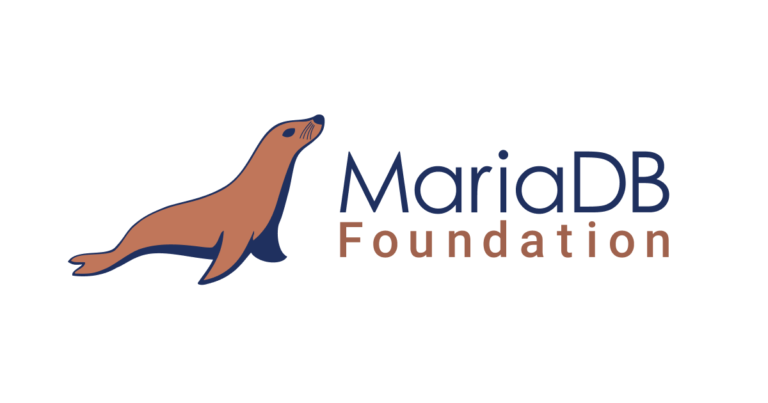Looking for a secure, lightweight, and container-ready Linux distribution? Alpine Linux is the answer!
This article offers an in-depth overview of Alpine Linux, focusing on its security-oriented design, use of musl libc and busybox, and emphasis on small size and simplicity.
Discover the latest developments in Alpine Linux, its advantages for Docker containers, and potential drawbacks.
Stay tuned for a comprehensive examination of Alpine Linux and its enterprise version, Alpaquita Linux.
Key Takeaways:
- Alpine Linux is a secure and lightweight Linux distribution that is specifically designed for containerization, making it a popular choice for cloud environments and Docker containers.
- With its emphasis on security measures and utilization of efficient components like musl libc and busybox, Alpine Linux offers fast and secure solutions for modern computing needs.
- Despite its small size and focus on simplicity, Alpine Linux offers a wide range of features and benefits, including regular updates and an enterprise version for business needs.
Introduction to Alpine Linux
Alpine Linux, known for its lightweight and security-focused nature, is a popular choice for container deployments.
Alpine Linux has gained a strong reputation in the tech community for its minimalistic approach. Its small size and resource efficiency make it ideal for containerized environments where every kilobyte matters. The minimal footprint of Alpine Linux not only reduces the attack surface but also enhances performance.
Its focus on security is another key reason why many developers opt for it in scenarios where safeguarding data and applications is crucial. Alpine’s commitment to providing a secure environment without compromising efficiency attracts organizations looking to run their applications securely in containers.
Overview of Alpine Linux as a secure, lightweight, and container-ready Linux distro
Alpine Linux stands out as a secure, lightweight Linux distribution optimized for containerization, utilizing musl libc and busybox to enhance efficiency.
One of the key aspects that sets Alpine Linux apart in terms of security is its minimized attack surface due to the musl libc implementation instead of the traditional glibc, reducing potential vulnerabilities. Its lightweight design not only makes it perfect for resource-constrained environments but also contributes to faster container startup times and overall system performance. Alpine’s compatibility with containers, along with its busybox utilization, allows for efficient utilization of resources, making it a popular choice for cloud-native applications.
Key Features of Alpine Linux
Alpine Linux boasts key features like the utilization of musl libc and busybox, ensuring heightened security and stability.
The use of musl libc in Alpine Linux is significant for its security enhancements, as it provides improved protection against common vulnerabilities like buffer overflows. Busybox, a single executable that combines many standard Unix utilities into a compact package, contributes to the system’s stability by reducing the overhead associated with multiple separate binaries. This design not only enhances the performance of Alpine Linux but also minimizes the attack surface, making it a robust choice for security-conscious users.
Security-oriented design
Alpine Linux’s security-oriented design, leveraging musl libc and busybox, ensures a minimal attack surface and enhanced system stability.
By utilizing the lightweight musl libc library and busybox tools, Alpine Linux significantly reduces the potential vulnerabilities that could be exploited by malicious actors. The focus on a minimalistic approach not only enhances security but also contributes to the overall system stability by reducing complex components that can introduce security risks. The integration of musl libc and busybox allows Alpine Linux to provide essential functionalities efficiently while keeping the system lightweight and robust against potential cyber threats.
Utilization of musl libc and busybox
By leveraging musl libc and busybox, Alpine Linux achieves a lightweight and minimal footprint without compromising functionality.
Alpine Linux’s utilization of musl libc enhances performance by providing a lean and efficient alternative to the standard C library, reducing bloat and improving responsiveness. Additionally, busybox acts as a Swiss Army knife by integrating several common Unix utilities into a single executable, streamlining resource utilization. This synergy allows Alpine Linux to excel in resource-constrained environments while delivering robust functionality for various applications.
About Alpine Linux
Alpine Linux is renowned for its small size, simplicity in usage, and strong focus on security measures.
One of the key characteristics that sets Alpine Linux apart is its compact size which makes it incredibly lightweight and fast to boot. This efficiency is highly beneficial for resource-constrained environments and containerized applications, allowing for streamlined operations.
Plus its simplicity, Alpine Linux offers a user-friendly experience, with clear documentation and straightforward configuration options. This ease of use appeals to both beginners and experienced users, fostering a welcoming environment for all levels of expertise.
The robust security measures implemented in Alpine Linux provide a strong defense against potential cyber threats. By employing security-focused processes and practices, Alpine Linux ensures the integrity and confidentiality of data, making it a reliable choice for security-conscious users.
Emphasis on being small in size
Alpine Linux’s emphasis on being small in size makes it an ideal choice for resource-constrained environments and container deployments.
In resource-constrained environments where every megabyte counts, Alpine shines by offering a minimalist design without compromising on functionality. Its lean architecture allows for faster boot times and efficient resource utilization, making it a top pick for servers, embedded systems, and container scenarios.
Alpine’s security focus adds another layer of appeal to organizations seeking a reliable and lightweight operating system. This dedication to security is particularly crucial in container deployments, where vulnerabilities can have far-reaching consequences.
Focus on simplicity in usage
Alpine Linux prioritizes simplicity in usage, offering a lightweight and stable platform for various computing needs.
Utilizing its ease of use ethos, Alpine Linux caters to a wide range of users, from beginners to advanced professionals, seeking a reliable and efficient operating system. The minimalist design of Alpine Linux ensures quick installation and easy configuration, making it an attractive option for those who prefer a streamlined computing experience.
Prioritization of security measures
The prioritization of security measures in Alpine Linux, bolstered by musl libc and busybox, ensures a robust and stable environment for users.
Alpine Linux’s dedication to security goes beyond mere compliance, with a focus on creating a multi-layered secure environment. The utilization of musl libc, known for its minimalistic and efficient design, contributes to reducing vulnerabilities inherent in standard libraries. Complementing this, the deployment of busybox, a compact set of essential UNIX utilities, aids in simplifying system management while enhancing security through its lightweight and hardened nature.
Alpine News and Updates
Stay informed about the latest Alpine Linux news, updates, and releases to keep abreast of the evolving features and enhancements.
Alpine Linux, known for its lightweight nature and security focus, continues to impress with its regular updates and feature additions. With a strong community of developers, Alpine Linux is constantly refining its offerings to provide users with a robust and secure operating system.
Recent updates have focused on improving package management, enhancing system stability, and bolstering security measures. These developments underline Alpine Linux’s commitment to staying ahead in the rapidly evolving landscape of Linux distributions.
Latest Developments in Alpine Linux
Explore the recent advancements and developments in Alpine Linux, focusing on security enhancements and system stability improvements.
Alpine Linux, known for its lightweight and security-focused nature, has made significant strides in bolstering its defenses against emerging cyber threats. One notable security update is the integration of the latest kernel patches to address vulnerabilities and strengthen the overall security posture of the system. Efforts have been made to optimize performance and enhance system stability through streamlined processes and refined algorithms.
Inside Alpine Linux
Delve into the core components of Alpine Linux, including musl, BusyBox, and OpenRC, known for their lightweight and minimalistic design.
Alpine Linux stands out in the world of Linux distributions due to its focus on minimalism and efficiency. The lightweight design of Alpine is achieved through the utilization of musl as its standard C library, which is known for its small footprint and excellent performance. The deployment of BusyBox as the default Unix shell and OpenRC as the init system contributes to the overall streamlined and resource-efficient nature of Alpine. By combining these core components, Alpine Linux excels in providing a robust operating system that is not only fast but also highly secure.
Overview of musl, BusyBox, and OpenRC
The trio of musl, BusyBox, and OpenRC forms the foundation of Alpine Linux, contributing to its lightweight and minimalistic architecture.
Alpine Linux, known for its security and efficiency, relies on musl as its standard C library, providing compatibility and stability without unnecessary bloat.
Furthermore, BusyBox plays a crucial role as a multi-call binary that combines many common UNIX utilities into a single executable, optimizing storage space and simplifying system management.
The OpenRC init system enhances the boot process by efficiently managing services, ensuring quick startup times and streamlined system initialization.
Together, this powerful trio harmoniously works to uphold Alpine Linux’s philosophy of simplicity and performance.
Benefits of Alpine Linux for Docker Containers
Discover the advantages Alpine Linux offers for Docker containers, including enhanced security, speed, and a lightweight footprint.
In terms of security, Alpine Linux stands out due to its minimalistic nature and less inherent vulnerabilities compared to other Linux distributions. This attribute is crucial in the context of Docker containers, ensuring that your applications are shielded from potential threats. The speed optimizations of Alpine Linux contribute to the overall performance efficiency of Dockerized applications, allowing for rapid deployment and responsiveness.
One of the key selling points of Alpine Linux is its lightweight footprint, which translates to reduced resource consumption, lower storage requirements, and faster container startup times. This makes it an excellent choice for environments where resource efficiency is paramount, such as cloud-native architectures and microservices deployments.
Advantages of small images, speed, and security
Alpine Linux presents benefits such as smaller images, faster speeds, and heightened security for containerized environments, enhancing efficiency and reliability.
One of the key advantages of Alpine Linux lies in its ultra-compact image sizes, significantly reducing storage overhead compared to other operating systems. This streamlined approach not only helps in minimizing resource consumption but also speeds up container deployment, resulting in quicker start times and improved overall performance. Alpine’s robust security features, including built-in stack protection and hardened libraries, ensure a secure environment for containerized applications, boosting the overall trustworthiness of the system.
Potential Drawbacks of Alpine Linux
Consider potential drawbacks of Alpine Linux, such as performance limitations, support challenges, and compatibility issues in certain environments.
One of the key performance limitations of Alpine Linux stems from its minimalist design, as it focuses on being lightweight rather than providing extensive features. This can lead to reduced performance in scenarios requiring high computational resources or complex software.
The support challenges may arise due to a smaller user base compared to more mainstream Linux distributions, translating to potentially longer response times for getting assistance with issues.
Moreover, compatibility issues might surface when using specialized tools or applications that are not well-suited for Alpine’s streamlined environment, requiring additional effort to adapt or find alternatives.
Considerations on performance, support, and compatibility
Factors like performance metrics, support availability, and compatibility requirements should be considered when evaluating Alpine Linux for specific use cases.
Alpine Linux is renowned for its minimalistic design, offering lightning-fast boot times and efficient resource utilization, making it an ideal choice for containerized applications requiring high-performance computing. In terms of support options, the vibrant community around Alpine ensures that users can find assistance through forums, wikis, and official documentation. Its compatibility with Docker and Kubernetes provides a seamless environment for deploying microservices and cloud-native applications. These evaluations underscore Alpine Linux’s strength in modern development scenarios, emphasizing its relevance for cutting-edge use cases.
Alpaquita Linux: Enterprise Version of Alpine
Explore Alpaquita Linux, the enterprise version derived from Alpine Linux, offering additional features and provisions for business environments.
Alpaquita Linux is specifically designed to meet the demands of modern enterprises, providing a robust and secure operating system foundation. This variant of Alpine Linux incorporates advanced security measures, such as enhanced access controls and encryption protocols, to ensure a high level of data protection.
Alpaquita Linux includes optimized performance features tailored for business workloads, enabling efficient resource utilization and system responsiveness. Its compatibility with a wide range of industry-standard software and tools makes it a versatile choice for diverse business applications.
Useful Resources and Links
Access valuable resources and documentation for Alpine Linux to deepen your understanding and optimize your usage of this versatile Linux distro.
When diving into the world of Alpine Linux, it’s essential to leverage the rich array of resources available to assist you on your journey. From the official Alpine Linux website to community forums, there’s a wealth of information waiting to be explored.
For comprehensive insights into the setup and configuration of Alpine Linux, be sure to consult the official documentation that covers a wide range of topics, including installation guides, package management, and system administration.
Frequently Asked Questions
What is Alpine Linux and what makes it unique?
Alpine Linux is a lightweight and secure Linux distribution designed for use in containers. It stands out from other distributions because of its small size, built-in security features, and compatibility with different container platforms.
How does Alpine Linux ensure security?
Alpine Linux uses hardened kernels and musl libc, a lightweight alternative to the traditional glibc, to reduce the attack surface and make it more difficult for hackers to exploit vulnerabilities. It also has a secure boot process and provides regular security updates.
Can Alpine Linux be used for both development and production environments?
Yes, Alpine Linux is suitable for both development and production environments. Its small size and fast boot time make it ideal for use in containers, while its secure design makes it a reliable choice for production environments.
What container platforms are compatible with Alpine Linux?
Alpine Linux is compatible with a wide range of container platforms, including Docker, Kubernetes, and OpenShift. This makes it a popular choice for organizations that use different container systems for their applications.
Is Alpine Linux suitable for beginners?
While Alpine Linux is known for its simplicity, it may not be the best choice for beginners who are not familiar with Linux. Its minimalistic design and use of musl libc may require some additional learning for those new to Linux.
Can I customize Alpine Linux for my specific needs?
Yes, Alpine Linux can be customized to fit your specific needs. Its modular design allows users to choose only the components they need, making it a flexible and customizable platform for different use cases.




